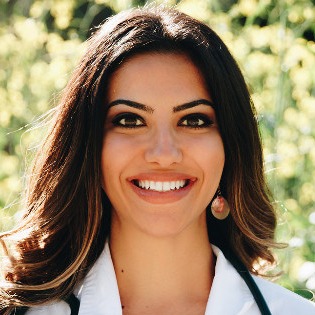
Cravings and Addiction
A guide to their causes, how to deal with them, and when to know if you need treatment
The basics
When it comes to substances, a craving is an experience that involves a strong desire to use substances like drugs, nicotine, or alcohol. Cravings, also sometimes referred to as urges, can feel powerful and intense. People who experience cravings may feel like they have no control and may assume that the only way to make the craving go away is to use the substance. Unfortunately, using drugs, nicotine, or alcohol may temporarily relieve the craving, but it can create a vicious cycle that leads to more cravings.
Cravings are one sign of an addiction problem. People who are addicted to drugs, nicotine, or alcohol also experience other symptoms, like failed efforts to quit or continued use despite health problems. If you are experiencing cravings, this may be a sign that you have or are developing an addiction problem.
Here’s a guide to cravings, what causes them, how to cope, and how to seek treatment for when you are unable to manage them on your own.
Table of contents

Why trust us

Our Author:
Emily Guarnotta, PsyDEmily Guarnotta, PsyD, is a licensed clinical psychologist who offers her expertise in mental health as a contributor to GoodRx. She is a graduate of the California School of Professional Psychology (CSPP) in San Diego, California. Her specialty areas include the treatment of anxiety, depression, and perinatal mood and anxiety disorders. In addition to her work with new parents, she also has experience treating substance use disorders and helping people recover from addictions. You can find out more about Dr. Guarnotta at themindfulmommy.com.
What triggers cravings for a specific substance?
Cravings can be triggered by:
People
Places
Things
Events
Emotions
Knowing your triggers for cravings can help you manage your recovery. You may be able to avoid certain triggers or prepare yourself in advance if you are going to be faced with one.
Why do we get cravings for substances?
The science behind cravings is complex, and we still do not understand it fully. However, it is believed that cravings are related to both biological and environmental factors. We know that substance use alters the reward circuit part of the brain, which may contribute to cravings. When a person uses substances, aspects of the environment can also become associated with the pleasurable experience. For example, seeing drug paraphernalia or liquor bottles may become associated with being “high” or drunk. Cravings can then arise when a person is exposed to these reminders, also known as triggers.
What are some common triggers for cravings?
Common triggers for drug, nicotine, and alcohol cravings include:
Negative emotions, like sadness, anxiety, and grief
Medical problems
Stressful or traumatic life events, such as divorce, loss of a job, or death of a loved one
Conflict with other people
Holidays and anniversaries
Social events like concerts or parties
Venues that serve or sell alcohol, like bars and liquor stores
Anywhere that a person has drank or used drugs in the past
Certain smells associated with drugs, tobacco, or alcohol
People who are using drugs, smoking, or drinking
Drug paraphernalia
While these are some of the most common triggers, your own triggers may be different. Being aware of your triggers is important for dealing with your cravings and preventing relapse.
Do cravings mean you could be dealing with an addiction problem?
If you are experiencing cravings for drugs or alcohol, you may be dealing with an addiction. Cravings are one symptom of a substance use disorder, which is a diagnosis given to people who experience serious problems with drugs and alcohol.
What are symptoms of a substance use disorder?
Symptoms of a substance use disorder include:
Using larger amounts of a substance over time
Unsuccessful efforts to quit or cut down
Spending long amounts of time using, acquiring, or recovering from a substance
Using substances despite failing to keep up with obligations at home, work, or school
Using substances despite recurring relationship problems related to substance use
Giving up important activities because of substance use
Cravings
Using substances in dangerous settings
Continuing to use substances despite physical or psychological problems related to substance use
Tolerance, which is a need for more substances over time to experience the desired effects or less of an effect with the same amount
Withdrawal, which are symptoms that arise when you stop or drastically cut back
If you experience at least two of the symptoms listed above, then you may have a substance use disorder. However, the only way to receive an accurate diagnosis is to be evaluated by a licensed medical or mental health professional.
How do you overcome feelings of guilt after giving into a craving?
Guilt is an emotion that you may experience if you feel disappointed in your actions. It is related to shame, anger, and depression.
Guilt is a common response following a relapse. If you have been trying to stay sober and have a slip, it is normal to experience some guilt. However, unmanaged guilt can interfere with your ability to recover from a relapse. Some people may turn to drugs and alcohol to cope with their guilt, which can lead to more guilt and shame, and create a vicious cycle.
Being aware of and taking active steps to cope with your guilt is important to keep you from falling into this cycle. Some examples of ways to manage feelings of guilt after a relapse are listed below.
Give yourself permission to make mistakes
After a relapse, you may be critical of yourself for slipping up. Remember that you are human and slips are a part of the recovery process. Remind yourself that it is OK to make mistakes, and focus on using it as a learning opportunity, rather than a chance to put yourself down.
Talk to your support system
Your support system is a valuable resource in helping you cope with guilt after a relapse. Reach out to a supportive person, like a non-judgmental friend or family member, therapist, or member of a recovery support group. Talking about your feelings with someone who understands can help you process what happened and figure out how to move forward.
Remember that progress isn’t linear
Keep in mind that recovery is a process that involves ups and downs. Having a relapse is a sign that your relapse prevention plan was not effective and you would benefit from making changes. Try to focus on solutions for where things went wrong and consider how you can approach recovery differently moving forward.
Do factors such as stress contribute to cravings?
There is no doubt that stress can be a trigger for relapse in people recovering from addictions. There are many different causes of stress, and stress often comes with other negative emotions like:
Fear
Irritation
Stress is also related to cravings for substances like heroin, cocaine, and nicotine. Depending upon the person or situation, stress can be both a cause and an effect of cravings.
Stress management is an important component of recovery to help reduce the risk of a relapse. There are many different ways to reduce stress. Mind-body practices are one set of techniques that can help reduce stress and may be beneficial for people in addiction recovery. They include:
Yoga
Tai chi
Acupuncture
Mindfulness
If you are overwhelmed with stress, consider trying one of these practices.
Are some substances harder to say no to than others?
Some substances are more likely to cause addiction than others. Each drug produces different effects in a person’s body, whether it is:
Alcohol
Cocaine
Opioids
Prescription medications
Drugs that cause physical dependence may be some of the most difficult to quit. Physical dependence happens when the body becomes accustomed to the effects of a substance over time. When a person stops taking the substance or drastically cuts back, the body goes into withdrawal. Withdrawal symptoms can vary depending upon the substance, but may include:
Cravings
Irritability
Anxiety
Depression
Nausea and vomiting
Seizures
Substances that cause physical dependence and therefore may be especially difficult to quit include:
Opioids like heroin, morphine, and fentanyl
Benzodiazepines like Xanax, Ativan, and Valium
If you are trying to quit one of these substances, it is important to speak with a medical professional before stopping on your own. In some cases, withdrawal symptoms can be severe and may require detoxification in a special medically monitored facility.
Ways to overcome cravings
Cravings may come up from time to time, especially in early recovery. Though they can feel powerful, you can gain control over them. Consider the following ways to help manage cravings.
Identify triggers
Knowing what triggers your cravings is important. When you are aware of your triggers, you can then decide whether you can eliminate them from your life. Take some time to think about your triggers. Ask yourself the following questions:
What people, places, or things cause me to want to drink, smoke, or use drugs?
What people, places, or things have been involved in my past relapses?
What emotions trigger my cravings?
What experiences tend to trigger those emotions?
Once you have established a list of your triggers, now it is time to consider what triggers can be avoided altogether. For example, you may be able to completely stay away from certain people, places (bars, restaurants, and liquor stores), and things (drug paraphernalia).
Other triggers may be more difficult or even impossible to avoid. For example, stress cannot be avoided, but knowing that this is a trigger for you shows that you need to focus on improving your coping stress management skills. Once you are aware of your triggers, write down which ones you will avoid or limit and which ones you will have to face. Brainstorm a plan for managing the cravings associated with triggers that you cannot avoid.
Imagine your cravings like waves
Cravings often feel strong and powerful. It can seem as though you don’t have any control over them. The truth is that cravings are temporary feelings that eventually will go away. However, when you are addicted to drugs, nicotine, or alcohol, you might not have given yourself the chance to experience riding out a craving rather than giving into it.
Imagining cravings like waves can help you cope with them. Like a wave, the feeling of a craving comes on strong and hits a peak. The peak is the most intense part of a craving and is the point at which you will want to drink, smoke, or use. However, you cannot stay at the peak forever. If you wait it out, the craving will eventually begin to subside, just like a wave. This idea of riding a wave of cravings is called “urge surfing.”
Delay the urge
Delaying the urge is another effective tool that can be combined with urge surfing:
Set a timer when you notice a craving. It is recommended to set it for around 15 minutes.
Then go and do something distracting, like read a book, watch television, or do some household chores.
When the timer goes off, check in with how you are feeling. Did you notice the craving decrease?
If not, ask yourself if you are being triggered by something in your environment at that moment.
If that is the case, remove yourself from the trigger and do the exercise again. It may take a few times, but most people notice the intensity of their cravings go down.
Practice mindfulness
Mindfulness is a mind-body practice that involves being fully present with yourself and the world around you. There are many benefits to practicing mindfulness, including a lower risk of relapse. If you are interested in using mindfulness, you can sign up for a class or listen to a recording online. There are also ways that you can practice on your own. If you’d like to use mindfulness to cope with your cravings, try this beginner practice:
Find a quiet place to sit or lie down in a comfortable position.
Start by noticing your breathing.
Now begin to count your breaths. Your inhale is one, your exhale is two. Your next inhale is three, your exhale is four. Continue this pattern until you hit 10.
When you reach 10, start over at 1 again.
You might notice your thoughts moving away from your breathing. If this happens, gently and without judgment bring your attention back to counting your breaths.
Continue this practice for as long as you like. You can even set a timer for 5 or 10 minutes.
Do medications work for cravings?
Medications may be helpful for people dealing with strong cravings for alcohol or opioids. Medication-assisted treatment involves the use of medications to help alleviate withdrawal symptoms and reduce cravings.
Medications for alcohol addiction include:
Disulfiram (Antabuse): Taking this medication regularly can help deter you from drinking. It’s taken once a day. It causes negative side effects if you drink alcohol after taking the medication.
Acamprosate (Campral): This helps decrease alcohol cravings. The medication is usually prescribed 3 times a day, and it must be taken for at least a week to experience its full effects.
Naltrexone (Revia): This medication blocks the pleasurable effects of alcohol.
Medications for opioid addiction include:
Methadone (Methadose, Dolophine): This is a liquid that helps control cravings and withdrawal symptoms. Depending on where you live, you may have to see a special provider or clinic for a prescription.
Buprenorphine (Subutex, Buprenex, Butrans): This helps reduce cravings and increases safety in the event of an overdose. Only trained medical providers can prescribe this medication.
Naltrexone (Revia): As it does with alcohol, naltrexone also blocks the pleasurable effects of opioids and decreases cravings.
Only a medical professional can determine whether you could benefit from medications for your cravings. If you think medication may be right for you, speak with your healthcare provider.
Additional treatment for cravings and substance use disorder
Reach out for sober support
Connecting with other people in recovery is another helpful way to manage cravings. Self-help meetings allow you to speak with other sober people who understand what you are feeling. These meetings are free, peer-led, and available in-person or online. There are dozens of self-help groups available, but some of the most popular ones include:
Alcoholics Anonymous (AA), a 12-step group that focuses on recovery from alcohol addiction. Members are encouraged to acknowledge that they are powerless over alcohol and give over control to a Higher Power.
Narcotics Anonymous (NA), another type of 12-step group for people recovering from drug addiction.
SMART Recovery, a secular group for anyone recovering from drug, nicotine, alcohol, or behavioral addictions, such as gambling, sex, or overeating. This group teaches skills like how to cope with cravings, set goals, and change negative thinking patterns.
Seek professional help
Many people with addiction problems benefit from professional treatment. If you agree with any of the following, treatment may be helpful:
I don’t feel like I can control my cravings.
I have tried to quit drugs and alcohol more than once and was unsuccessful.
I can’t seem to control my use, even though it’s causing problems in my life.
I find that I need more drugs or alcohol to feel the desired effects.
I experience withdrawal symptoms when I stop using or cut back.
There are many different forms of addiction treatment, including residential or outpatient detoxification programs. The type of treatment that is right for you will depend on the severity of your addiction. If you think that you may be dealing with an addiction problem, speak to a healthcare provider about your concerns.
Keep in mind
Cravings may be a sign of a substance use disorder if they are accompanied by other symptoms. Though cravings can feel intense, they cannot force you to use drugs or alcohol. With practice, you can gain control over your cravings by avoiding triggers and taking actions to reduce their intensity.
More information and resources
Why trust our experts?


References
Best study we found
Tiffany, S. T., et al. (2012). The clinical significance of drug craving. Annals of the New York Academy of Sciences.
Azadfard, M., et al. (2020). Opioid addiction. StatPearls.
Brett, J., et al. (2015). Management of benzodiazepine misuse and dependence. Australian Prescriber.
Cooper, S., et al. (2017). Reward circuitry in addiction. Neurotherapeutics: The Journal of the American Society for Experimental NeuroTherapeutics.
Harvard Medical School. (2014). Alcohol abuse.
National Center for Complementary and Integrative Medicine. (2017). Mind and body practices.
National Institute on Drug Abuse. (2018). Principles of drug addiction treatment: A research-based guide.
National Institute on Drug Abuse. (2018). The science of drug use and addiction: The basics.
National Institute on Drug Abuse. (2020). Drugs, brains, and behavior: The science of addiction.
Preston, K. L., et al. (2011). Stress in the daily lives of cocaine and heroin users: Relationship to mood, craving, relapse triggers, and cocaine use.
Priddy, S. E., et al. (2018). Mindfulness meditation in the treatment of substance use disorders and preventing future relapse: Neurocognitive mechanisms and clinical implications. Substance Abuse and Rehabilitation.
Sinha, R. (2012). How does stress lead to risk of alcohol relapse?. Alcohol Research: Current Reviews.
Substance Abuse and Mental Health Services Administration. (1999). Brief interventions and brief therapies for substance abuse.
Substance Abuse and Mental Health Services Administration. (2020). MAT medications, counseling, and related conditions.
Substance Abuse and Mental Health Services Administration. (2021). Buprenorphine.
Tiffany, S. T., et al. (2012). The clinical significance of drug craving. Annals of the New York Academy of Sciences.
World Health Organization. (2009). Clinical guidelines for withdrawal management and treatment of drug dependence in closed settings.
If you or someone you know struggles with substance use, help is available. Call SAMHSA’s National Helpline at 1-800-662-4357 to learn about resources in your area.

























